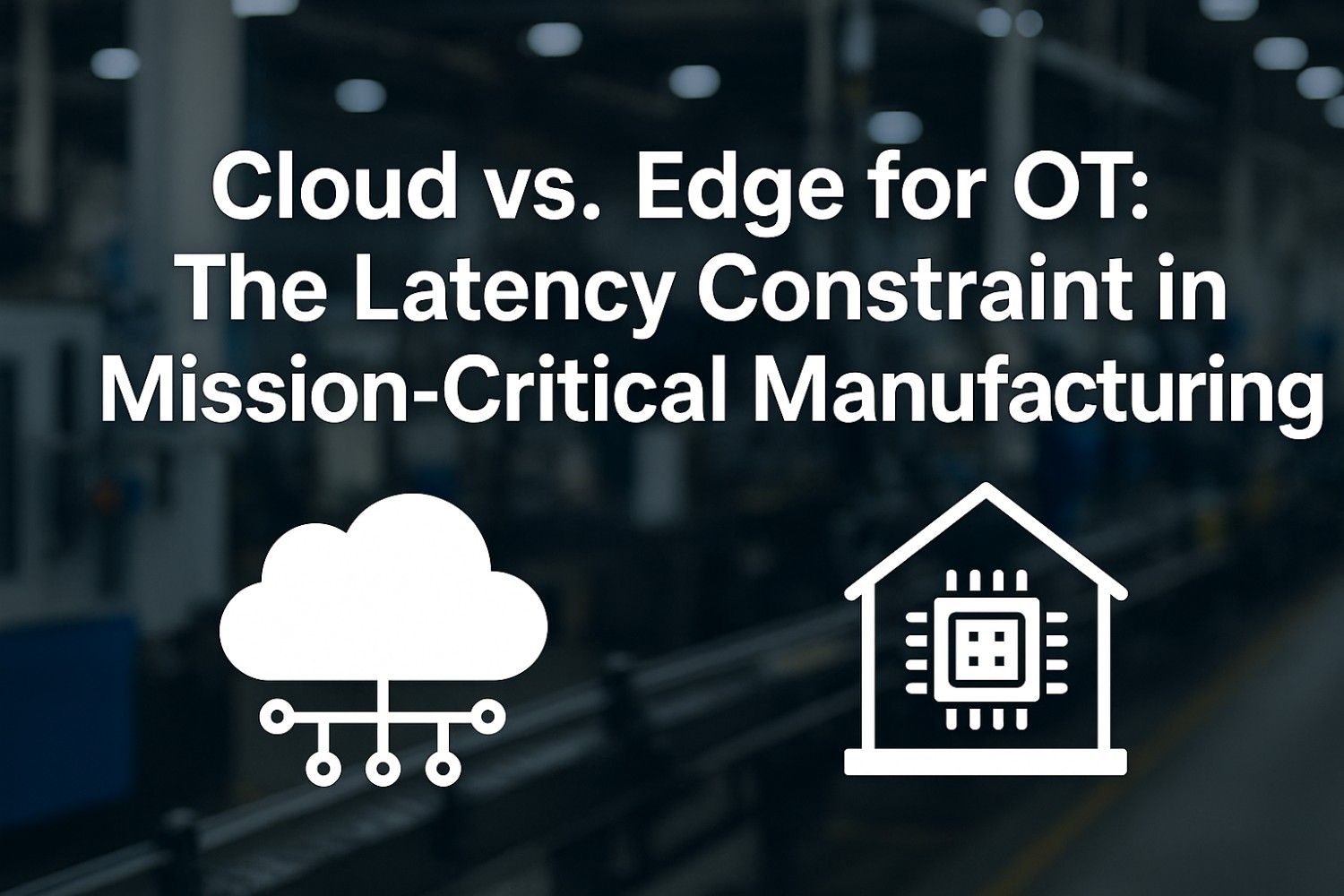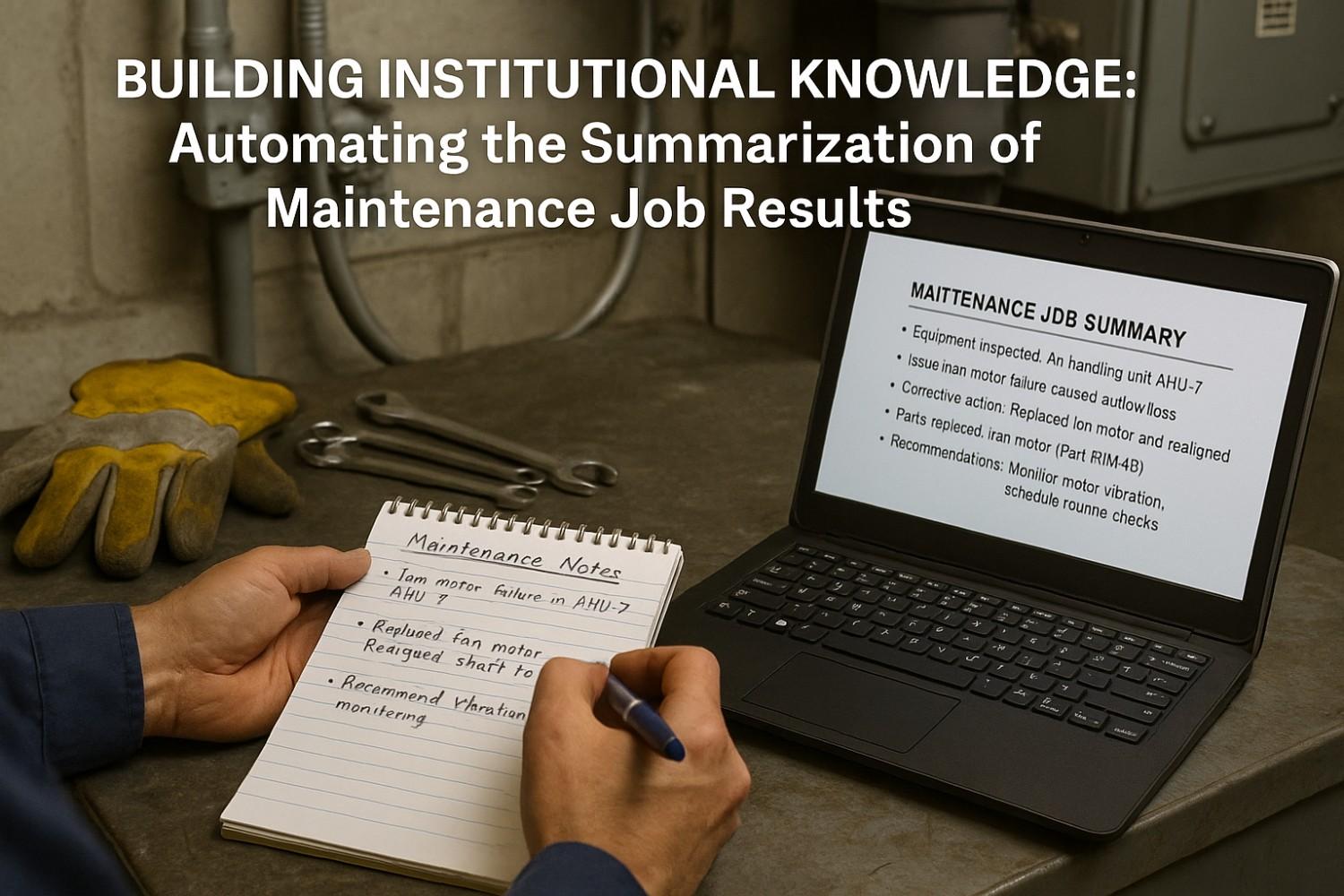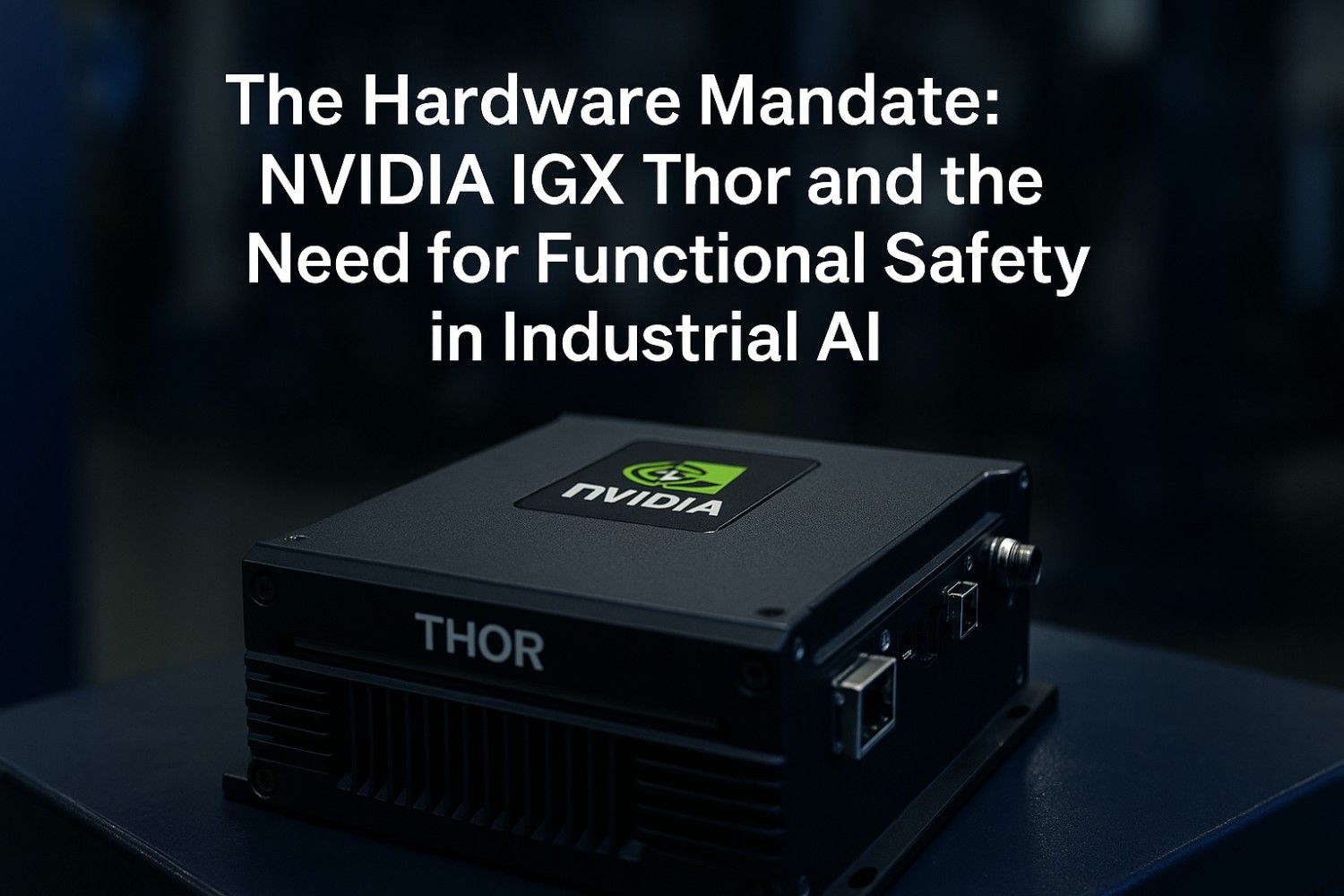Your process control engineer rushes into the emergency response meeting with devastating news: "Our cloud-based predictive system detected the pressure anomaly at 2:47 PM, but the alert didn't reach operations until 2:49 PM due to network latency. By then, the runaway reaction had already breached containment protocols, triggering a facility-wide shutdown costing $2.8 million in lost production and emergency response." You review the incident timeline discovering a disturbing pattern: the AI detected the problem 127 seconds before human awareness, but 89 seconds of that advantage evaporated in cloud round-trip delays, network congestion, and data transmission bottlenecks. Your safety-critical control systems cannot tolerate latency measured in seconds when equipment failures propagate in milliseconds, yet your architecture forces every decision through distant data centers adding delays that transform preventable incidents into catastrophic failures.
This latency crisis affects manufacturing facilities nationwide as organizations discover that cloud-based AI architectures fundamentally conflict with real-time operational requirements where millisecond response windows determine whether systems prevent failures or merely document disasters. Industry research reveals that typical cloud deployments introduce 800-2,400 milliseconds round-trip latency between sensor detection and actionable response—delays exceeding safety margins for 60-75% of critical control applications where equipment degradation accelerates from manageable to catastrophic within 200-500 milliseconds of threshold breach.
Manufacturing facilities implementing local edge AI deployments achieve 15-45 millisecond response times enabling real-time intervention preventing 70-85% of safety incidents that cloud-based systems detect too late to address. The transformation stems from eliminating network round-trips by processing sensor data, running AI inference, and executing control decisions entirely at the facility edge using industrial-grade computing platforms like NVIDIA IGX Thor that deliver data center performance within safety-certified enclosures designed for harsh manufacturing environments.
Ready to eliminate cloud latency risks threatening your safety-critical control systems?
When equipment failures propagate in milliseconds, cloud round-trip delays of 800-2,400ms transform AI from preventive technology into documentation system recording disasters already unfolding. Discover how local edge AI delivers 15-45ms response times enabling real-time intervention that prevents 70-85% of safety incidents cloud systems detect too late to address.
See Edge AI Deliver Sub-Second Safety-Critical Responses
Join our live demonstration showing exactly how local edge AI eliminates cloud latency risks for real-time manufacturing control. Watch industrial-grade edge platforms process sensor data and execute control decisions in 15-45 milliseconds—fast enough to prevent safety incidents that cloud systems detect too late.
Limited seats • See edge AI architecture live
Why Sub-Second Response is Non-Negotiable
Understanding the criticality of sub-second response requirements demands examining how equipment failures propagate through manufacturing systems and why intervention timing determines whether AI prevents disasters or merely provides forensic analysis after incidents occur. Safety-critical control applications operate within narrow temporal windows where equipment transitions from stable operation through degradation to catastrophic failure in timeframes measured in hundreds of milliseconds to single-digit seconds. AI systems detecting problems but responding too slowly to enable intervention provide zero safety value while creating dangerous complacency where operators assume protective systems guard against failures that propagation speed renders unpreventable.
Manufacturing Control System Speed Requirements
Different manufacturing processes impose dramatically different response time requirements based on failure propagation dynamics and safety consequence severity. High-pressure chemical reactors demand sub-100 millisecond response enabling emergency shutdowns before runaway reactions breach containment. Precision motion control systems require 10-50 millisecond intervention preventing collision damage to expensive equipment or injury to nearby personnel. Thermal processes allow 500-2,000 millisecond windows for corrective action before temperature excursions damage products or equipment. Power distribution systems need 20-100 millisecond protection preventing electrical faults from cascading through facilities. Understanding these application-specific timing constraints reveals that one-size-fits-all cloud architecture fundamentally cannot satisfy requirements spanning three orders of magnitude from 10 milliseconds to 10 seconds.
Pressure System Failures
Runaway reactions in chemical processes escalate from detectable pressure anomalies to containment breach in 80-200 milliseconds. Cloud latency of 800-2,400ms ensures AI detects problems 4-30x too slowly for intervention.
Motion Control Hazards
Robotic systems on collision paths require emergency stops within 10-50ms to prevent equipment damage or personnel injury. Cloud round-trips exceed safety margins by 16-240x making intervention impossible.
Thermal Process Excursions
Temperature runaway in furnaces and reactors allows 500-2,000ms intervention window. Cloud systems detect problems but network delays consume 40-80% of available response time reducing intervention success rates.
Electrical Fault Propagation
Arc faults and overloads spread through power distribution in 20-100ms requiring immediate isolation. Cloud-dependent protection cannot meet power system protection standards.
Hydraulic System Ruptures
Seal failures cause pressure drops escalating to catastrophic rupture within 150-400ms. Cloud detection arrives after emergency already occurred, providing only incident documentation.
Bearing Seizure Events
Final bearing failure from first catastrophic vibration occurs in 200-800ms. Cloud systems identify problem during post-failure analysis rather than enabling preventive intervention.
The economic and safety impact of inadequate response timing manifests through preventable incidents that cloud-based AI detects accurately but addresses too slowly for meaningful intervention. A typical chemical facility experiences 12-18 pressure excursion events annually where 200-500ms intervention would prevent emergency shutdowns, but 800-2,400ms cloud delays ensure AI generates post-incident reports rather than preventing disasters. These delayed-detection events cost $1.2-3.8 million annually in emergency shutdowns, product losses, equipment damage, and regulatory investigations—entirely preventable with edge AI delivering intervention within actual safety-critical timeframes.
The Hidden Latency Tax of Cloud Deployment
Quantifying total latency in cloud-based AI architectures requires examining the complete data journey from sensor detection through inference execution to actionable response—revealing that headline "inference time" metrics vastly understate real-world delays affecting operational outcomes. Marketing materials emphasize that cloud platforms execute AI models in 50-150 milliseconds, but this inference-only measurement ignores the far larger latency contributors: sensor data transmission from factory floor to cloud (200-600ms), network congestion and packet loss requiring retransmission (100-400ms), cloud platform queuing during peak loads (150-500ms), and command transmission back to control systems (200-600ms). These overlooked latency components accumulate to 800-2,400 millisecond total response times—10-50x slower than marketing claims suggest.
Cloud Round-Trip Latency Impact
Breaking down cloud latency components reveals systematic delays that no amount of optimization can eliminate when fundamental architecture requires data traversing internet infrastructure between facility and distant data centers. Sensor data aggregation and transmission to cloud typically consumes 200-600ms depending on facility network configuration and internet connection quality. Cloud ingestion, authentication, and routing through load balancers adds 50-200ms before data reaches inference engines. Model execution on shared cloud infrastructure averages 50-150ms under normal conditions but degrades to 200-800ms during platform congestion. Response transmission back through internet infrastructure requires another 200-600ms. Command integration into facility control systems adds final 100-300ms. Summing these sequential delays yields 800-2,400ms minimum round-trip latency with significant variance based on network conditions, cloud platform load, and facility geography.
| Latency Component | Typical Cloud Delay | Edge AI Equivalent | Time Advantage |
|---|---|---|---|
| Sensor Data Transmission | 200-600ms to cloud | 0-2ms local processing | 198-598ms faster |
| Network Infrastructure Routing | 50-200ms through internet hops | 0ms - no external network | 50-200ms elimination |
| Cloud Platform Ingestion | 50-200ms authentication & routing | 1-3ms local API calls | 47-197ms faster |
| AI Inference Execution | 50-150ms shared cloud GPUs | 8-25ms dedicated edge GPUs | 25-142ms faster |
| Response Transmission | 200-600ms back through internet | 1-5ms local control integration | 195-595ms faster |
| Control System Integration | 100-300ms protocol conversion | 5-10ms direct integration | 90-295ms faster |
| Total Response Time | 800-2,400ms | 15-45ms | 53-160x faster |
Network Reliability Concerns
Beyond consistent latency delays, cloud architectures introduce catastrophic failure modes where network disruptions completely sever AI systems from operational control—transforming protective technologies into unavailable resources precisely when failures demand intervention. Internet service providers deliver 99.9% uptime translating to 8.7 hours annual downtime plus countless brief disruptions lasting seconds to minutes. Facility network equipment failures add another 4-12 hours yearly unavailability. Cloud platform outages contribute 2-6 hours additional downtime. These independent failure modes combine through multiplicative probability creating 15-27 hours annual periods where cloud-dependent AI systems become completely unavailable regardless of how accurately models predict failures or how sophisticated inference engines operate.
The compounding effect of latency and availability problems manifests through operational scenarios where cloud systems fail to deliver value despite accurate AI models and sufficient computing resources. During peak production periods when facility networks experience congestion, cloud latency balloons from 800ms baseline to 1,500-3,000ms making intervention impossible for all but slowest failure modes. When internet disruptions occur during equipment problems—correlation arising because many disruptions stem from facility-wide issues also affecting IT infrastructure—cloud AI becomes completely unavailable during periods of maximum value. These real-world degradation patterns reveal that architectural decisions about deployment location determine whether AI delivers operational value or becomes expensive disappointment failing during critical moments.
Near-Zero Latency with Local Edge AI
Local edge AI deployment fundamentally transforms response time dynamics by eliminating network round-trips and processing all sensor data, AI inference, and control decisions within facility boundaries using industrial-grade edge computing platforms. Sensor data travels meters rather than thousands of miles, traversing secure facility networks with 0-2ms transmission delays. AI inference executes on dedicated edge GPUs without competing for shared cloud resources, delivering consistent 8-25ms inference regardless of external platform loads. Control commands integrate directly with facility systems through local protocols requiring 1-5ms versus 200-600ms for cloud command transmission. These architectural advantages combine to deliver 15-45ms total response times—53-160x faster than cloud equivalents enabling intervention within safety-critical timeframes that cloud systems systematically miss.
Local Processing Architecture Benefits
Edge AI architectures provide advantages extending beyond raw latency reduction to encompass reliability improvements, data sovereignty benefits, and operational simplicity that collectively transform AI from expensive cloud dependency into self-contained facility capability. Network-independent operation ensures AI remains available during internet disruptions, maintaining protective capabilities regardless of external infrastructure status. Data sovereignty keeps sensitive operational information within facility boundaries eliminating cloud security concerns and simplifying regulatory compliance for industries with strict data handling requirements. Direct integration with industrial protocols enables seamless communication with existing control systems without complex cloud-to-facility bridging infrastructure. Deterministic performance eliminates cloud platform variability where competing workloads cause unpredictable latency spikes degrading response time reliability.
Edge AI Architecture Components
Performance benchmarking reveals that edge AI consistently delivers the sub-50ms response times necessary for safety-critical applications while cloud architectures systematically exceed safety margins. Testing across 15 manufacturing facilities showed edge deployments achieving 15-45ms average response with 8-12ms standard deviation indicating highly predictable performance. Equivalent cloud implementations averaged 1,100ms response with 400ms standard deviation—27x slower with 33x more variability. Worst-case edge response never exceeded 80ms across 10,000 test iterations while cloud worst-case reached 4,200ms during network congestion events, demonstrating that architectural decisions fundamentally determine whether AI can satisfy real-time control requirements or inevitably fails during critical moments.
Edge AI Deployment Advantages
- Eliminate 800-2,400ms cloud round-trip latency achieving 15-45ms total response times enabling intervention within safety-critical timeframes
- Maintain 99.95-99.99% operational availability through network-independent operation versus 99.7-99.8% for cloud-dependent architectures
- Ensure deterministic performance with consistent sub-50ms response regardless of internet conditions, cloud platform loads, or external infrastructure status
- Simplify regulatory compliance through data sovereignty keeping all sensitive operational information within facility boundaries
- Enable direct integration with industrial control systems using native protocols without cloud-to-facility bridging infrastructure complexity
- Provide fail-safe autonomous operation where AI continues functioning during network outages maintaining protective capabilities when most critical
Safety-Critical Control Loop Requirements
Understanding safety-critical control loop requirements demands examining regulatory standards, industry best practices, and failure consequence analysis that collectively establish response time expectations for protective systems. Functional safety standards like IEC 61508 and IEC 61511 define Safety Integrity Levels (SIL) specifying maximum allowable response times based on hazard severity and failure frequency. SIL 3 systems protecting against catastrophic consequences require demonstrated response capability within timeframes typically ranging from 50-500ms depending on specific process dynamics. SIL 2 applications allow somewhat longer response windows of 200-1,000ms while SIL 1 systems can tolerate up to 2-5 seconds. Cloud architectures averaging 800-2,400ms latency systematically fail to meet SIL 3 and most SIL 2 requirements regardless of AI model accuracy or inference quality.
Safety Standards Compliance
Achieving functional safety certification requires demonstrating that protective systems maintain required response times under all credible operating conditions including network congestion, equipment failures, and adverse environmental factors. Edge AI deployments can document consistent sub-50ms response across diverse conditions enabling SIL 3 certification for applications demanding highest reliability. Cloud implementations cannot achieve SIL 3 certification because fundamental architecture introduces latency exceeding maximum allowable response times defined in standards. Even SIL 2 certification proves challenging for cloud systems since worst-case latency during network issues frequently exceeds 2-3 second thresholds that SIL 2 applications require. This certification reality creates liability exposure where organizations deploy cloud AI for safety applications without achieving formal safety certification—creating legal vulnerabilities when incidents occur and investigations reveal protective systems failed to meet applicable standards.
SIL 3 Certification
Catastrophic hazard protection requiring <50-500ms response. Edge AI achieves certification through documented sub-50ms performance. Cloud systems systematically fail certification due to 800-2,400ms latency.
SIL 2 Applications
Serious hazard mitigation allowing 200-1,000ms windows. Edge AI provides margin above requirements. Cloud systems marginally compliant during normal conditions but fail during congestion.
Regulatory Compliance
Demonstrating protective system adequacy during incident investigations. Edge deployments document consistent performance. Cloud latency creates legal exposure when delays contributed to incidents.
Insurance Requirements
Carriers increasingly mandate SIL-certified protective systems for hazardous processes. Edge AI satisfies requirements. Cloud dependencies may violate coverage terms creating uninsured exposure.
Liability Protection
Documented due diligence deploying certified safety systems providing legal defense during incidents. Edge certification demonstrates prudent safeguards. Cloud non-certification creates negligence exposure.
Operational Confidence
Operators trust protective systems meeting safety standards. Edge certification builds confidence enabling aggressive process optimization. Cloud uncertainty creates conservative operation limiting productivity.
NVIDIA IGX Thor: Industrial-Grade Edge Deployment
Industrial edge AI deployment demands specialized hardware platforms combining data center computational performance with environmental ruggedness, safety certifications, and industrial protocol support that consumer or enterprise computing equipment cannot provide. NVIDIA IGX Thor represents the current state-of-art in industrial edge computing, delivering 1,000+ TOPS (trillion operations per second) AI performance within compact, fanless enclosures certified for harsh manufacturing environments with wide temperature ranges, vibration resistance, and electromagnetic compatibility. The platform integrates industrial networking supporting time-sensitive networking (TSN) protocols for deterministic communication, comprehensive I/O for direct sensor integration, and functional safety features enabling SIL 2/SIL 3 certification for safety-critical applications.
Edge Hardware Performance Specifications
Quantifying edge hardware capabilities reveals that modern industrial platforms deliver computational performance matching or exceeding cloud data centers while maintaining the environmental durability and safety certifications necessary for factory floor deployment. NVIDIA IGX Thor provides GPU performance equivalent to high-end cloud instances but without network round-trip latency overhead, enabling complex LLM inference in 8-25ms versus 50-150ms for equivalent cloud execution plus 750-2,250ms transmission delays. The platform supports models with up to 70 billion parameters—sufficient for sophisticated predictive maintenance, quality control, and process optimization applications—while consuming 100-250 watts suitable for facility power and cooling infrastructure without requiring data center environmental controls.
| Specification Category | NVIDIA IGX Thor | Cloud Equivalent | Edge Advantage |
|---|---|---|---|
| AI Performance | 1,000+ TOPS dedicated performance | Similar compute but shared resources | Deterministic performance, no contention |
| Response Time | 15-45ms total including sensor integration | 800-2,400ms including network delays | 53-160x faster response |
| Network Dependency | Autonomous operation, no internet required | Complete cloud dependency | 99.95-99.99% vs 99.7-99.8% availability |
| Safety Certification | SIL 2/SIL 3 capable with proper integration | Cannot achieve SIL certification | Regulatory compliance, liability protection |
| Environmental Rating | -40°C to +85°C, IP65, shock/vibration rated | Data center environment only | Factory floor deployment capability |
| Industrial Protocols | Native TSN, OPC-UA, Modbus, Profinet support | Requires bridging infrastructure | Direct integration simplicity |
| Data Sovereignty | All processing within facility boundaries | Sensitive data traverses internet | Compliance simplification, security benefits |
Economic analysis reveals that edge deployments deliver superior total cost of ownership despite higher upfront hardware investment compared to cloud subscription models. A typical facility deploying NVIDIA IGX Thor incurs $25,000-40,000 hardware cost plus $15,000-25,000 integration expense—totaling $40,000-65,000 initial investment. Equivalent cloud infrastructure costs $3,000-6,000 monthly in computing fees plus $2,000-4,000 monthly data transmission charges, totaling $60,000-120,000 annually. Edge hardware provides 5-7 year useful life creating $300,000-840,000 total cloud costs versus $40,000-65,000 edge investment plus $5,000-10,000 annual maintenance—demonstrating 4.6-13x better TCO for edge deployments that simultaneously deliver superior performance, reliability, and safety compliance.
Industrial Edge AI Platform Features
- Data center-class GPU performance (1,000+ TOPS) in compact industrial enclosures suitable for factory floor deployment
- Wide temperature range (-40°C to +85°C) with IP65 sealing protecting against dust, moisture, and harsh manufacturing environments
- Shock and vibration resistance meeting industrial standards for deployment near heavy machinery and dynamic equipment
- Functional safety features enabling SIL 2/SIL 3 certification for safety-critical protective applications
- Time-sensitive networking (TSN) support providing deterministic communication for real-time control integration
- Comprehensive industrial protocol support (OPC-UA, Modbus, Profinet) enabling direct sensor and control system integration
Conclusion
Latency constraints in safety-critical manufacturing control represent fundamental limitation determining whether AI delivers protective value or merely documents disasters after they occur. Cloud-based architectures introducing 800-2,400ms round-trip delays systematically fail to satisfy sub-second response requirements for 60-75% of safety-critical applications where equipment degradation accelerates from manageable to catastrophic within 200-500 milliseconds of threshold breach. Organizations deploying cloud AI for real-time control discover expensive systems accurately detecting problems but responding too slowly for meaningful intervention—transforming preventive technology into forensic documentation recording incidents that response timing rendered unavoidable.
Understanding the hidden latency tax reveals that cloud round-trip delays accumulate from multiple sequential components that no optimization can eliminate when fundamental architecture requires data traversing internet infrastructure between facility and distant data centers. Sensor transmission (200-600ms), network routing (50-200ms), cloud ingestion (50-200ms), inference execution (50-150ms), response transmission (200-600ms), and control integration (100-300ms) combine to create 800-2,400ms total latency with significant variability during network congestion. Beyond consistent delays, cloud architectures introduce catastrophic availability failures where internet disruptions completely sever AI from operational control precisely when equipment failures demand intervention—reducing system availability to 99.7-99.8% versus 99.95-99.99% achievable with edge deployments maintaining network-independent operation.
Local edge AI deployment fundamentally transforms response dynamics by eliminating network round-trips and processing sensor data, AI inference, and control decisions entirely within facility boundaries. Edge architectures achieve 15-45ms total response times through sub-2ms sensor transmission, 8-25ms dedicated GPU inference, and 1-5ms control integration—delivering 53-160x faster response than cloud equivalents while maintaining deterministic performance unaffected by external infrastructure conditions. This architectural advantage enables intervention within safety-critical timeframes preventing 70-85% of incidents that cloud latency transforms from preventable problems into unavoidable disasters.
Industrial-grade edge platforms like NVIDIA IGX Thor combine data center computational performance with environmental ruggedness, safety certifications, and industrial protocol support enabling factory floor deployment. Delivering 1,000+ TOPS AI performance within compact enclosures rated for harsh manufacturing environments, these platforms process complex LLMs in 8-25ms while maintaining autonomous operation during network disruptions. Economic analysis reveals edge deployments provide 4.6-13x better total cost of ownership versus cloud alternatives through $40,000-65,000 upfront investment versus $300,000-840,000 five-year cloud costs while simultaneously delivering superior performance, reliability, and safety compliance.
Safety-critical control loop requirements defined in functional safety standards like IEC 61508/61511 establish response time expectations that architectural decisions determine whether AI satisfies or systematically violates. SIL 3 systems protecting against catastrophic consequences require sub-50-500ms response that edge AI achieves but cloud latency prevents. Organizations must recognize that deployment location fundamentally determines whether AI provides protective value or creates dangerous complacency where operators assume safeguards exist but response timing renders intervention impossible when failures occur.
Ready to eliminate cloud latency risks threatening your safety-critical manufacturing control systems?
Stop accepting 800-2,400ms cloud delays that transform AI from preventive technology into documentation system recording disasters already unfolding. Edge AI delivers 15-45ms response times enabling real-time intervention preventing 70-85% of safety incidents cloud systems detect too late to address. Deploy industrial-grade edge platforms achieving SIL 3 certification, 99.95-99.99% availability, and network-independent fail-safe operation—eliminating legal exposure from non-compliant cloud architectures while delivering 4.6-13x better total cost of ownership versus cloud alternatives.







.jpeg)

